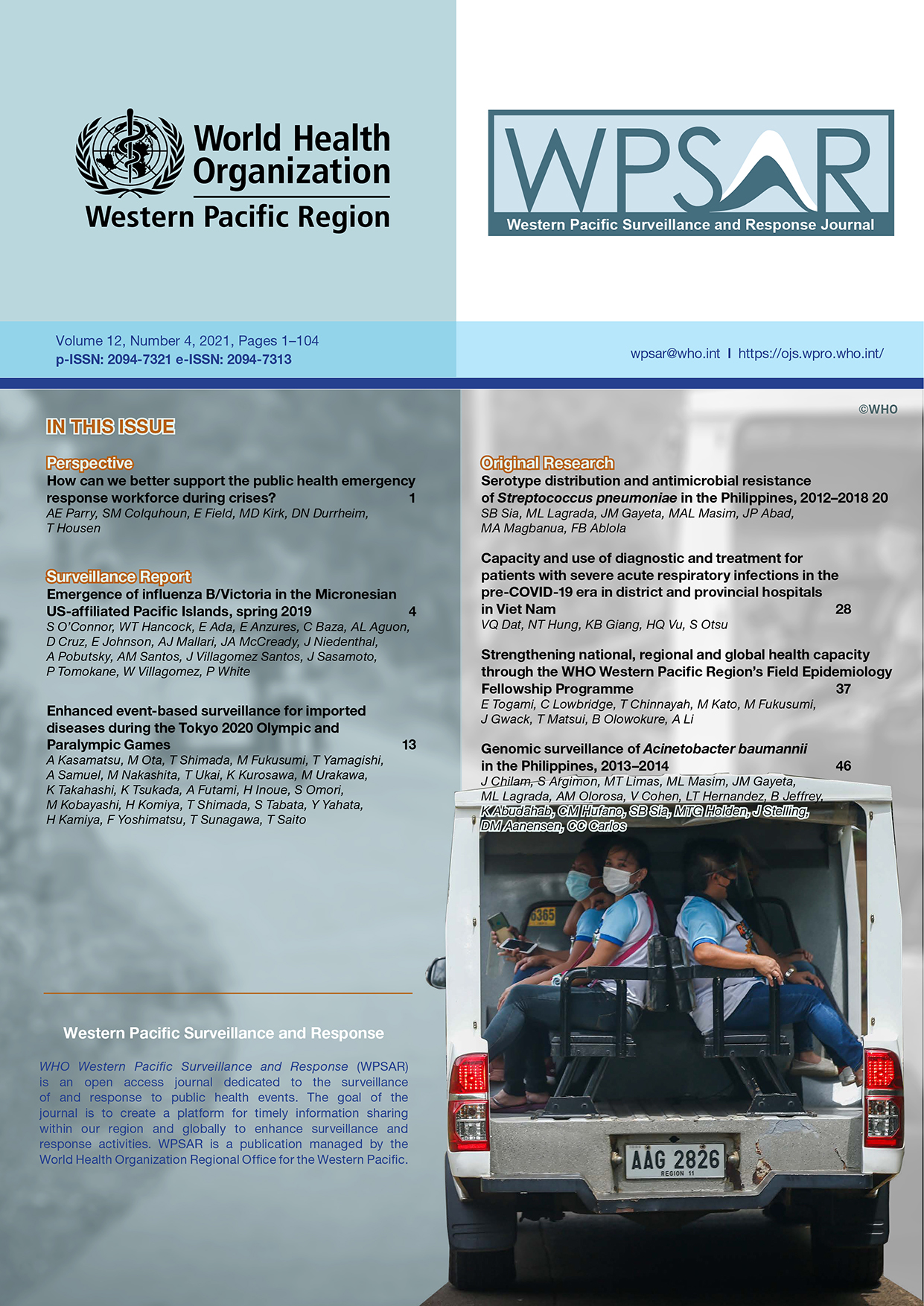Lessons learnt from the first large outbreak of COVID-19 in health-care settings in Tasmania, Australia
DOI:
https://doi.org/10.5365/wpsar.2021.12.4.884Abstract
Problem: One month after the initial case of coronavirus disease 2019 (COVID-19) in Tasmania, an island state of Australia, two health-care workers (HCWs) from a single regional hospital were notified to public health authorities following positive tests for SARS-CoV-2 nucleic acid. These were the first recognized cases in an outbreak that overwhelmed the hospital’s ability to function.
Context: The outbreak originated from two index cases. Both had returned to Tasmania following travel on a cruise ship and required hospital admission for management of COVID-19. A total of 138 cases were subsequently linked to this outbreak: 81 HCWs (most being nurses) and 23 patients across three hospitals, one resident of an aged-care facility and 33 close contacts.
Action: The outbreak was controlled through the identification and isolation of cases, identification and quarantining of close contacts and their household members, closure of the affected facilities and community-level restrictions to reduce social mixing in the affected region.
Lessons learnt: Factors that were likely to have contributed to ongoing transmission in this setting included workplace practices that prevented adequate physical distancing, attending work while symptomatic, challenges in rapidly identifying contacts, mobility of staff and patients between facilities, and challenges in the implementation of infection control practices.
Discussion: Many commonly accepted hospital practices before the COVID-19 pandemic amplified the outbreak. The lessons learnt from this investigation changed work practices for HCWs and led to wider public health interventions in the management of potential primary and secondary contacts.

